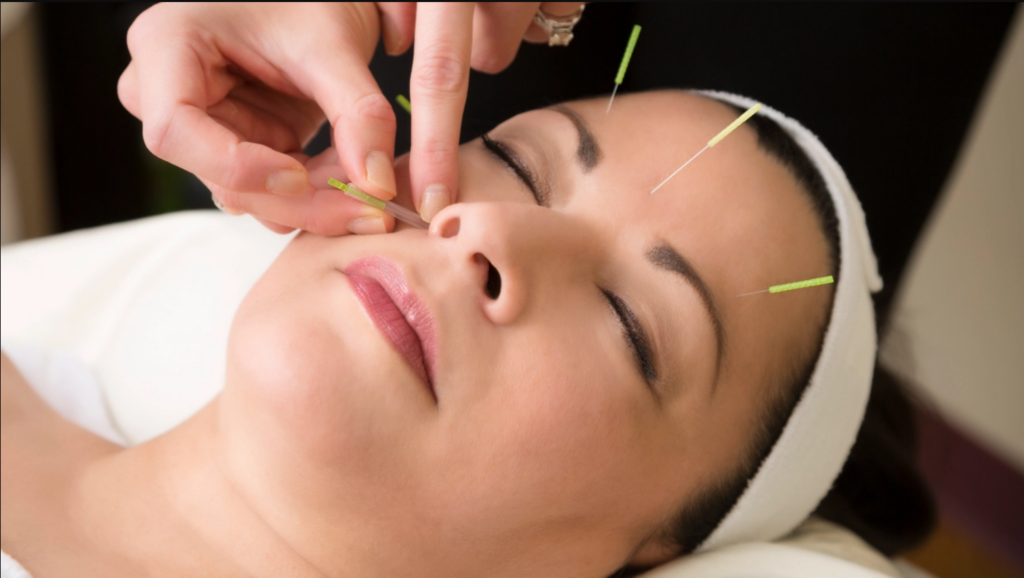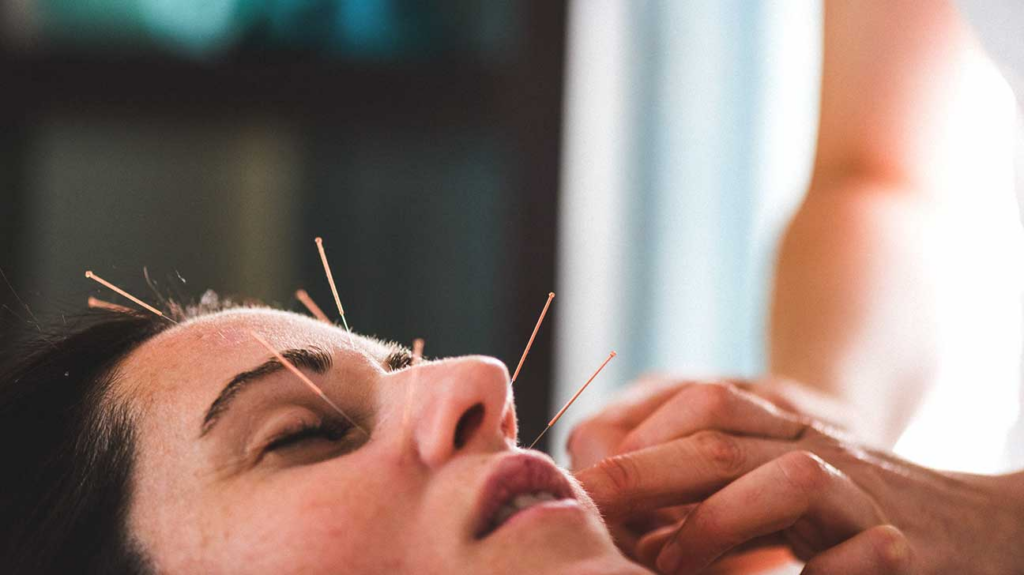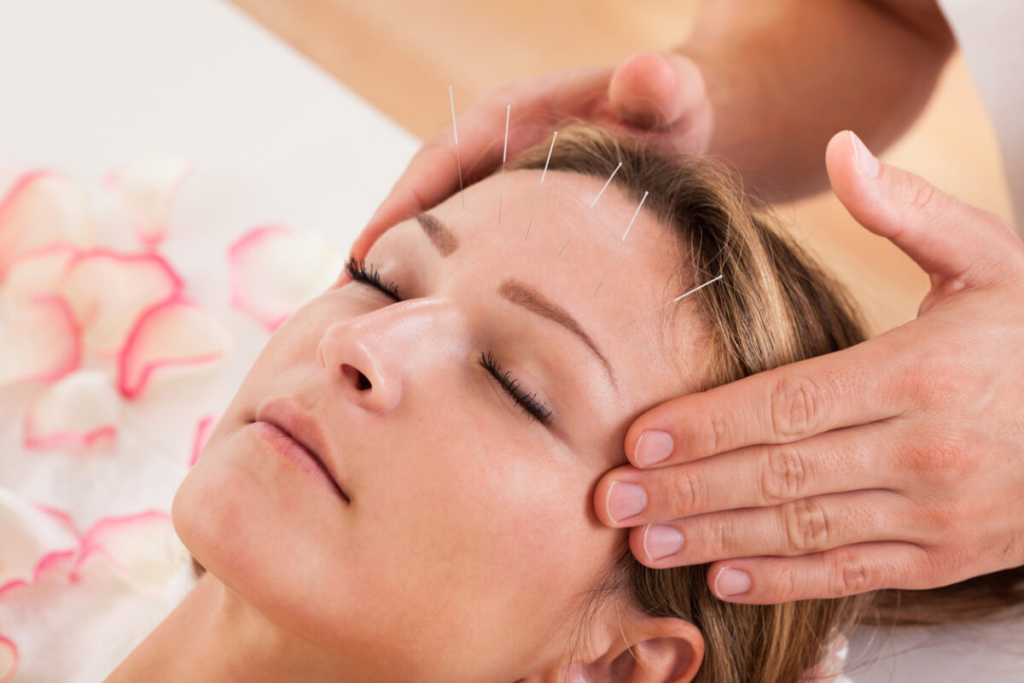Is acupuncture like a rejuvenating facial? 2023

Despite its current popularity, “wellness” is a vague term. It’s hard to distinguish medically backed services and goods from woo-woo ones, and it’s simple to leave feeling worse and worse. It threatens millennia-old acupuncture.
The NHS supports it for chronic and musculoskeletal pain and migraines, but the website notes that “traditional” acupuncture, as opposed to “medical,” is “not always based on rigorous scientific evidence” and “largely based on belief” in certain principles.
Qi, or vital energy, is supposed to travel along meridians that connect our organs and system. Acupuncture, which originated in Traditional Chinese Medicine (TCM), thinks that blockages that prevent this energy from flowing freely cause systemic inflammation, which Western medicine agrees is the foundation of many ailments.
In TCM, needles are inserted at precise locations on the body and face to unblock energy and blood stagnation and restore balance, healing nutrients, and oxygen flow. Acupuncture prevents disease by treating its symptoms and causes. The NHS only admits that needles release endorphins, which relieve pain.

Time Tested
Cosmetic acupuncture—lauded by many for its lifting, plumping, and skin-energizing effects—has little Western proof. TCM acupuncturist Joanna Ellner, a former beauty editor, laments the paucity of study. “There are plenty of peer-reviewed studies proving the benefits of acupuncture, but only one into facial acupuncture for skin rejuvenation,” she explains.
Acupuncture has silently worked for thousands of years. It has withstood cultural revolutions, wartime, and the emergence of tech—if it didn’t work, it would have gone away like so many of the face rejuvenation products I evaluated as a writer.”
Ellner thinks the internet revolution may be helping acupuncture take off here. “Human touch and connection,” she explains. “I believe its rise stems from us craving these things as biological creatures, when our hyper-digitalised culture is steering us away from them.”

Acupuncture beauty
Facial acupuncture—an “all-natural facelift”—how does it work? “Like all acupuncture, we treat the root and branch,” Ellner explains. “A qualified TCM practitioner will diagnose which organs may contribute to skin issues (dry skin, for example, is likely linked to the lungs) and place needles that correspond to them at points around the face and body.”
The body regulates, clears, and nourishes afflicted areas to improve skin from the inside out. Ellner says these needles, which may penetrate 10mm, can replicate muscle and cause a collagen-boosting dermis injury reaction.
“I also insert tiny gold intradermal needles directly into the fine lines of the face at a much more superficial depth to help stimulate fresh cell regeneration in the epidermis, which is often last in line when receiving cellular nutrients,” she explains.
TCM doctor John Tsagaris, who treats numerous celebrities, insists it’s not microneedling. “Microneedling is an effective way to mechanically resurface the skin, while cosmetic acupuncture is about skin biostimulation and mind-body approach,” he says.
He claims the technique may “optimise the regenerative abilities” of cosmetic operations like lasers, mesotherapy, and others, “most of which my clients have had”. Tsagaris utilizes acupuncture to fix lumpy fillers and botched Botox and believes carefully placed needles may enhance bone regeneration and fat breakdown, reversing age-related tissue loss and migration.
Acuskinlift, his own procedure, “coils collagen fibres around it, forming threads” by twisting the needle. “These support the skin’s structure, resulting in firmness, volume, and the activation of fibroblasts to produce more collagen and elastin,” he says.
Cosmetic acupuncturist and holistic therapist Sarah Bradden uses face acupuncture, reiki, LED light, acupressure massage, ear seeds (small studs on acupressure points), and microneedling. “I specialize in skin care,” she explains. “Facial acupuncture is a powerful treatment that’s even more effective with these complementary therapies, which I tailor to the individual.” Ellner uses cupping, gua sha, and tui na face massage.

After a facial with Tsagaris, Ellner, or Bradden, clients enthuse about the tone, juicy translucency, and inner peace. With consistent therapy, results last. As the body resets and releases obstructions, acupuncture effects are cumulative.
Beyond pain and facials
Acupuncture is becoming the perfect complement to health practitioners’ expertise. Last year, Pricc partnered with Peep Club to treat dry eye syndrome, a scratchy, teary disease that acupuncture may address.
“Dry eye has a lot to do with inflammation and will get progressively worse if it’s not addressed,” explains Pricc founder and acupuncturist Victorine Pot. “Research shows acupuncture stimulates our vagus nerve, triggering the adrenal glands to release dopamine to tame inflammatory molecules.” Thus, therapy may eliminate eye drop reliance.
Advanced antiseptic dental hygiene and Bradden’s acupuncture at London’s Nejati Clinic eliminate oral biofilm, which can cause gum and systemic illness. “The combined results bring down inflammation in the gums and beyond—and they help the body heal,” says dental surgeon Mahsa Nejati.
Eye and mouth acupuncture protocols vary. “That’s irrelevant,” replies Bradden. “Acupuncture is by its nature bespoke, with the same imbalances and symptoms having very different causes depending on the patient.” Acupuncture aims to restore bodily balance, regardless of the condition.
Everything else—including a calm mind and radiant skin—should follow. If it was good enough for the Empress of China, Tsagaris assures me, it’s worth a try.
